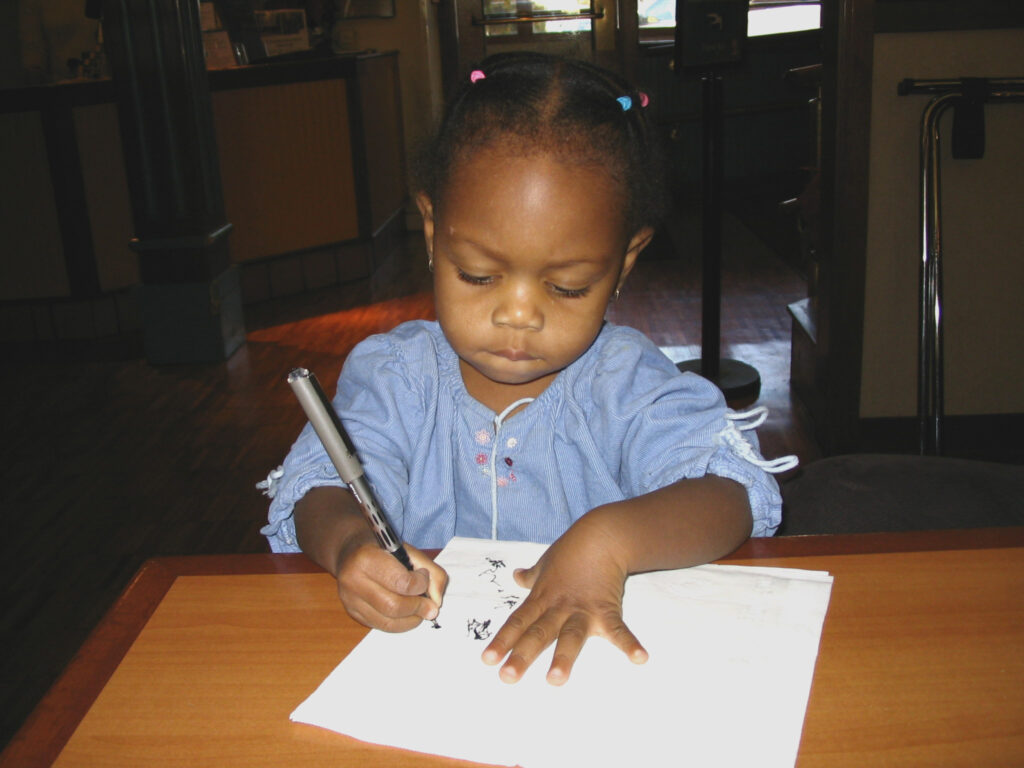Communication disorders detected between 0-3 years of age, are eligible for free early intervention services. Many communication challenges can be addressed at that time, and do not become a disorder. However, some children even after early intervention, continue to struggle with language development because they are not developing speech and language skills quickly enough to keep up with academic demands. For many children, especially black and brown children, they are less likely to receive the intervention for which they are eligible than their black counterparts due to many factors.
Prevalence of Communication Disorders
- Nearly 1 in 12 (7.7 percent) U.S. children ages 3-17 has had a disorder related to voice, speech, language, or swallowing in the past 12 months.1
- Among children who have a voice, speech, language, or swallowing disorder, 34 percent of those ages 3-10 have multiple communication or swallowing disorders, while 25.4 percent of those ages 11-17 have multiple disorders.1
- Boys ages 3-17 are more likely than girls to have a voice, speech, language, or swallowing disorder (9.6 percent compared to 5.7 percent).1
- The prevalence of voice, speech, language, or swallowing disorders is highest among children ages 3-6 (11.0 percent), compared to children ages 7-10 (9.3 percent), and children ages 11-17 (4.9 percent).1
- More than half (55.2 percent) of U.S. children ages 3-17 with a voice, speech, language, or swallowing disorder received intervention services in the past year.1 White children (ages 3-17) with a voice, speech, language, or swallowing disorder are more likely to have received intervention services in the past 12 months, compared to Hispanic and black children, at 60.1 percent, 47.3 percent, and 45.8 percent respectively.1
- Boys (ages 3-17) with a voice, speech, language, or swallowing disorder are more likely than girls to receive intervention services, at 59.4 percent and 47.8 percent, respectively.1
- Among children ages 3-17 who have a voice, speech, language, or swallowing disorder, those with speech or language problems, 67.6 percent and 66.8 percent respectively, are more likely to receive intervention services, compared to those who have a voice disorder (22.8 percent) or swallowing problems (12.7 percent).1
- More than half (55.2 percent) of U.S. children ages 3-17 with a voice, speech, language, or swallowing disorder received intervention services in the past year.1 White children (ages 3-17) with a voice, speech, language, or swallowing disorder are more likely to have received intervention services in the past 12 months, compared to Hispanic and black children, at 60.1 percent, 47.3 percent, and 45.8 percent respectively.1
- Boys (ages 3-17) with a voice, speech, language, or swallowing disorder are more likely than girls to receive intervention services, at 59.4 percent and 47.8 percent, respectively.1
- Among children ages 3-17 who have a voice, speech, language, or swallowing disorder, those with speech or language problems, 67.6 percent and 66.8 percent respectively, are more likely to receive intervention services, compared to those who have a voice disorder (22.8 percent) or swallowing problems (12.7 percent).1
NIDCD. 2022. Quick Statistics About Voice, Speech, Language. [online] Available at: <https://www.nidcd.nih.gov/health/statistics/quick-statistics-voice-speech-language> [Accessed 28 February 2022].
When a communication weakness is diagnosed at 0-3 years of age and a child receives early intervention. Many communication challenges can be addressed at that time, and do not become a disorder. However, some children after early intervention, continue to struggle with communication because they are not developing speech and language skills at a typical rate needed to meet academic demands. This communication weakness is further exacerbated by the mismatch between language development and academic demands.
Differences between Girl and Boys
Both girls and boys, more boys than girls, take part in speech-language therapy in elementary school. As they get older, boys will continue in treatment while girls become less willing to participate. This may be partly because girls are more concerned with being part of their peer group, want to work in their own way, and may be more able to convince their mother that they do not need or want additional help. Some girls that do not receive treatment for communication disorders feel they can not learn and become unmotivated in school. In addition, they may have poor self -esteem and self worth, which results in underperformance in school. Boys on the other hand can also be resistant for some of the same reasons, but are identified as needing help more frequently than girls. Early intervention is especially critical for both girls and boys, but boys are often identified earlier than girls.
Diversity and Speech and Language Services
Black and brown students do not receive services at the same rate as white children. For black and brown students with co-existing developmental disorders and moderate to severe communication disorders, more substantial services may be accessed through early intervention process or primary care doctors. However, for BIPOC youth with average intelligence or above and mild to moderate communication disorders, services may be difficult to qualify for through the IEP process, even though the communication deficit is impacting their educational attainment. This is because the IEP process requires a diagnosis which uses standardized testing and observation. There is unrecognized bias in the standardized testing and often in the evaluator that can impact POC children’s ability to receive appropriate services. Children can be overdiagnosed or underdiagnosed and each of these occurence have a significant impact on the child’s development. Not only are these children often dealing with unacknowledged biases, they are more likely to be labeled with behavior problems that are often the result of the communication challenges. This co-0ccurance of behavioral problem and communication problems often are not taken into consideration. Black and brown youth are more likely to be treated harshly and labeled inaccurately in the current IEP process which makes it difficult for parents to know what to do.
Children for whom English is a second language can also have difficulty getting an accurate diagnosis through the school system. First speech-language testing, although improving, does not allow children to speak in the dialect or language they are most comfortable unless they are tested by a SLP who speaks their language. Unfortunately the field of speech pathology is predominantly white and female. According to ASHA, American Speech Language and Hearing Association, there are 4% black SLP’s, 3% Asian SLP’s, 6% Hispanic, and 1% multiracial, so speech pathology is not a very diversified field and that is reflected in both testing used and testing bias found in current evaluation. (1 “A Demographic Snapshot of SLPs.” The ASHA Leader, vol. 24, no. 7, American Speech–Language–Hearing Association, July 2019, p. 32. https://doi.org/10.1044/leader.aag.24072019.32) The assessments assume common knowledge which is often culturally bias and current tests do a poor job of defining more high-level communication problems found when assessing the whole communication system as a whole. For instance, children may be able to do tasks at the word or phrase level which most standardized test, evaluate adequately, but they can not tell a narrative or comprehend more complex information. In these cases, a narrative sample is needed. Most speech language pathologist in schools have heavy caseloads do not have the time to do this additional work intensive step, so they rely heavily on standardized tests and observations. Another factor is that most 86% of SLP’s are white and 96% female which demonstrates a lack of diversity in language and culture and may be less aware of their unknowledge biases which is based on their own life experiences that often lack any interactions with people of color. For these reasons, black and brown children may not receive an accurate diagnosis and therapy goals may be mismatched.
In addition, kids of color have an additional burden when assigned to “special ed” that further alienates them from their peers and may result in teasing. Receiving special education services in public school is a stigma that many children have difficulty overcoming. Special education is often synonymous in children’s minds with not being smart, even though communication disorders and intelligence are not linked. Intellectual disorders and communication disorders co-occur, but for many children communication disorders are not related to intelligence For many reasons black and brown children do not receive the speech-language services they need which can cause continued struggles in language that last a lifetime and impact academic goals.
What to do? There are no simple answers. Here are a few general ideas.
1.) After receiving the evaluation through your public school, if you don’t agree, request in writing an outside evaluation. Do not sign the IEP.
2.) Be persistent and document everything by keeping a log of all calls, meetings, and emails
3.) Find a self-advocacy group in your area that can help you learn to advocate effectively for your child. In the Boston metro area that group is Federation for Children with Special Needs
4.) For kids of color and girls if you can either afford outside testing or outside services you think will help, use the school testing and seek outside services especially if your child is struggling with self esteem issues in elementary school.
1 “A Demographic Snapshot of SLPs.” The ASHA Leader, vol. 24, no. 7, American Speech–Language–Hearing Association, July 2019, p. 32. https://doi.org/10.1044/leader.aag.24072019.32.


